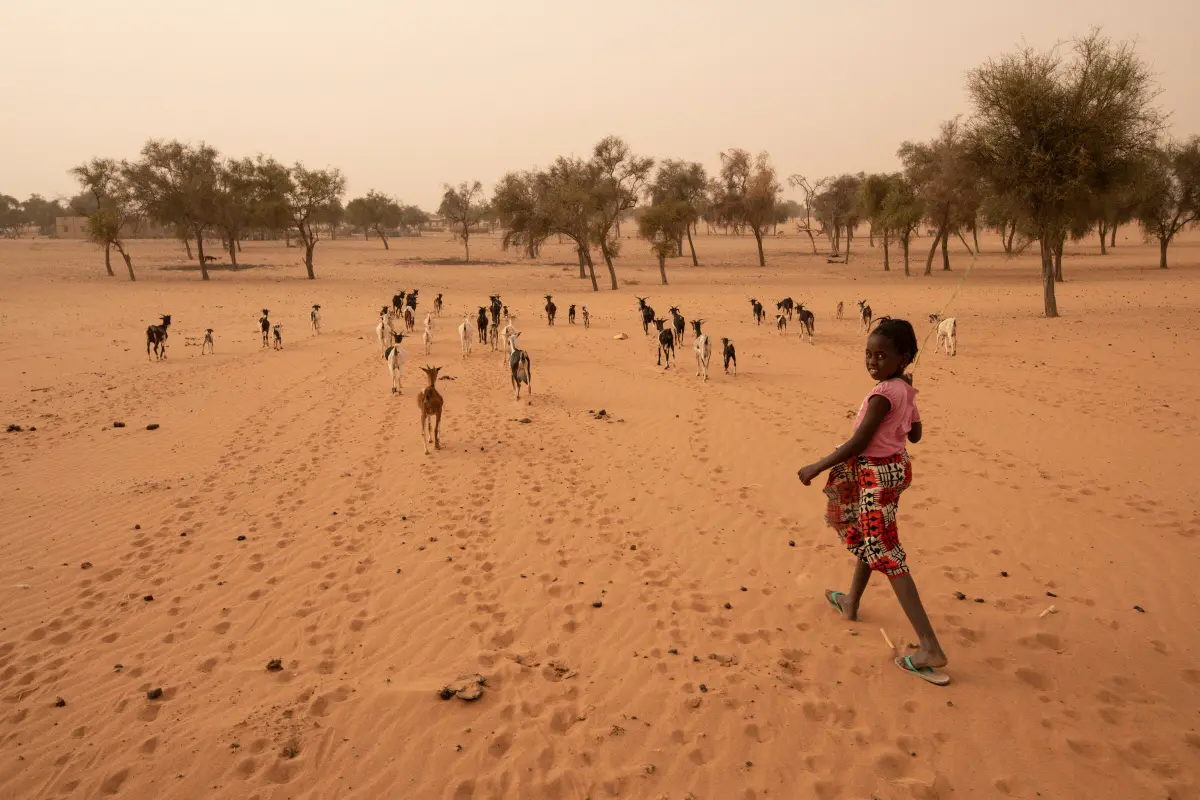Women play a role to ensure the health of the land. The UN’s Convention educates about effectively working the land and destroying barriers for women
June 17th, New York: World day to combat Desertification and Drought
This year’s global observance of World day to combat Desertification and Drought is held at the UN Headquarters in New York, with events taking place in all parts of the world.
196 parties are taking part in the convention to try to improve living conditions for people in the affected areas, by restoring and maintaining the soil fertility, and mitigating the effects of drought to avoid the risk of displacement of the communities involved.
Tree planting is one of the schemes the parties encourage the participation of local people in. Strong community involvement and cooperation at all levels is one of the key pillars in which the country parties and their stakeholders believe, trying to educate the public about effective methods to work the land without causing further degradation of it.
United Nations commitment to Ecosystems Restoration: decade 2021-2030
Ecosystem restoration means assisting in the recovery of ecosystems that have been degraded or destroyed, as well as conserving the ones that are still intact.
All kinds of ecosystems can be restored: forests, farmlands, cities, wetlands and oceans, with initiatives that can be launched by governments, development agencies, businesses, communities and individuals, and they can all have an impact at different scales.
Most of the time, nature can recover on its own if human activities remove pressures, but it is not always possible or desirable to return an ecosystem to its original state. That is why we still need farmland, infrastructure and societies to adapt to the changing climate and help restore the state of the lands they contributed to destroy.

UNCCD and WMO, the reports: Desertification and drought in numbers
Forecasts estimate that by 2050 droughts may affect over three-quarters of the world’s population. According to the report of the World Meteorological Organization, the number and duration of droughts has increased by an alarming 29 percent since 2000. At the same time, more than 2.3 billion people worldwide face water stress.
Between now and 2030, the restoration of 350 million hectares of degraded terrestrial and aquatic ecosystems could generate gains as per US$9 trillion in ecosystem services and 13 to 26 gigatons of greenhouse gases removed from the atmosphere.
Desertification and Drought Day 2023: Her Land, Her Rights campaign
This year’s theme Her land. Her rights emphasize women’s equal access to land and associated assets as a direct investment in their future, to position them at the forefront of the worldwide land restoration and drought resilience efforts.
A recent study at the Gender Caucus during the COP15 in Abidjan, Côte d’Ivoire, was launched to demonstrate the connection between desertification, land degradation and drought. It was discovered that they are not simply only about the land, but about people and societal roles. Climate, ecosystems and human societies are interdependent.
Women hold a vital stake in the health of the land, yet they often don’t have control over it. In all parts of the world, women face significant barriers in securing land rights and, in many regions, they remain subject to discriminatory laws and practices.
The relationship between gender inequality and land drought
The study highlighted gender inequalities in many fields: land tenure, access to technologies and resources for sustainable land management, decision-making on policies and actions regarding desertification and drought, and daily management of lives for women and girls.
When given access to agricultural technologies, technical training and climate science information, women’s contributions become broader and more effective. Contributions by women come through the recovery of traditional adaptation practices and in the design or implementation of new and sustainable methods such as rainwater jars, new irrigation systems and seedling nurseries run by women.
Recovery plans post-COVID-19 and the global commitment towards the transition to a greener economy need to include gender equality at the basis of a progressive structural and cultural change.

Land Degradation Neutrality (LDN): the new goal. Land restoration is not enough
Restoration helps vulnerable communities adapt to droughts by increasing agricultural production through the implementation of water filtration systems. However, land restoration is not enough. Consumption and production practices need to be improved on the agriculture side by growing more food on less land and consuming less water.
To date, 128 countries have expressed political will to follow an approach to achieve or exceed LDN – Land Degradation Neutrality – a state whereby the amount and quality of land resources necessary to support ecosystem functions and services to enhance food security remain stable, or increase, within specified temporal and spatial scales and ecosystems.
Developing and implementing integrated drought action plans
Nearly 70 countries participated in the UNCCD’s global drought initiative. Developing and implementing integrated drought action plans is the first step. We should set up effective early-warning systems that could work across boundaries.
New technologies, such as satellite monitoring and artificial intelligence, are also gaining space in these processes, to monitor, measure and ensure continuous improvement and effectiveness of the land restoring methods. Current investments are made to improve soil health, protect local communities and ecosystems.
Desertification day
The World Day to Combat Desertification and Drought is a United Nations observance celebrated each year on 17 June. Its purpose is to raise awareness of the presence of desertification and drought, highlighting methods of preventing desertification and recovering from drought



















